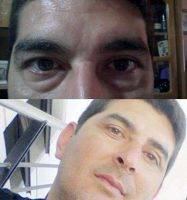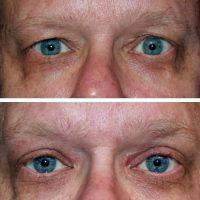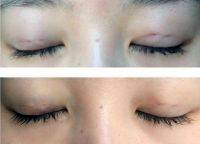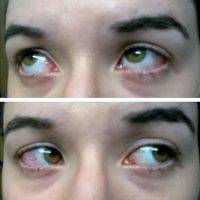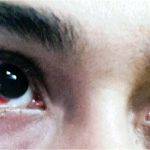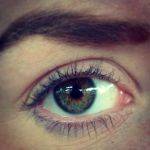Chemosis After Blepharoplasty
Chemosis after blepharoplasty is a special type of edema, which is characterized by swelling and accumulation of fluid at the site of surgery. Chemosis of the conjunctiva is formed in the eyeball and can smoothly pass to the eyelids.
This complication after surgery is dangerous because due to the accumulation of pus and germs in the area of the edema, it is possible that the eyeball and vision are broken, in general. Chemosis can capture the entire eye that is very dangerous. This complication can be avoided, if you follow all the doctor’s instructions and go to the hospital with the slightest change in the eyelids after the operation.
Sometimes it is not enough to use expensive cosmetic products to achieve an ideal appearance. If you want to retain your youth for a long time, then expensive facial cream, various serums and oils should become your dear friends.
However, a few women every day do all the necessary procedures to keep their skin, hair and body young. That’s why plastic surgery is popular all over the world. In fact, it’s a great opportunity to quickly and effectively change your appearance.
You should understand that there is always the risk of infection, because it all depends on the expert, to whom you trust your body. Do not try to find the cheapest clinic in your city, because you risk your health.
On the Internet you can find a lot of information about the positive aspects of eyelid surgery, but few people talk about the shortcomings. In fact, blepharoplasty has its complications, like any other procedure to change the appearance. Let’s take a detailed look at the possible negative sides, so that you can prepare for the procedure morally and physically.
1. Swelling of the conjunctiva or chemosis.
It can appear after seamless transconjunctival blepharoplasty as a result of infection in the incision on the surface of the conjunctiva. The physical activity of the patient during the rehabilitation period leads to this. It is expressed in dry eyes, blurred vision and tangible discomfort.
If timely treatment begins with the use of artificial tears and special eye ointments, the swelling of the conjunctiva subsides.
Chemosis is edema of the conjunctiva and can be caused by inflammation of the transconjunctival incision or by hyperactivity. For example, a case where the patient felt so good after blepharoplasty, that, having come home, she bent down to pull out the weeds, which caused serious chemosis.
Complication can lead to the drying of the cornea and conjunctiva, blurred vision and discomfort of the eyes. In mild cases of chemosis, rapid improvement often occurs with the continuous use of eye lubrication (artificial tears and ophthalmic ointments).
Swelling of the conjunctiva. Most often occurs due to patient’s non-compliance with the recovery process in the post-operative period. Do not exercise in the position of tilt, lift weights, generally apply effort. If any of the above is done, the occurrence of chemosis is not ruled out. This is fraught with visual impairment, discomfort and dry eyes.
2. Lagophthalmos after blepharoplasty. This problem is familiar to almost all the fair sex, who decided to perform an operation to change the shape of the eyelids. Lagophthalmos is characterized by a certain irritation and itching immediately after the operation. Many patients complain of burning and dryness, which can lead to serious illnesses.
If you start using special drops on time to moisten the mucous membrane and use the ointment prescribed by the doctor, you can get rid of this complication in a few days.
3. Blood accumulation under the conjunctiva after blepharoplasty. This hemorrhage is only a cosmetic defect and passes very quickly. The task of a professional plastic surgeon is to convince the patient that these are trifles, which you should not pay attention to. This complication is not dangerous and does not lead to the development of diseases. The only drawback is a visual change in the eye, which scares most patients.
4. Noticeable scars after blepharoplasty. Unfortunately, this feature is typical for clinics in which unskilled specialists work.
Medial scars are the result of illiterate suturing of the wound after surgery, for example, if a large amount of skin or fat has been removed. Thus, the living tissue is very tightened, and the incision line does not heal well. In any case, this defect can be solved if the excision and re-stitching are done. Scars can be healed with the help of medications, for example, injections of triamcinolone.
5. Loss of vision after blepharoplasty. Unfortunately, in modern plastic surgery there are also such complications. This can occur due to the appearance of a hematoma at the site of surgery. But not all patients are prone to this complication, most often they are people of advanced age and those who have metabolic disorders.
Also, hematoma can form in patients who suffer from hypertension, so it is always necessary to undergo a comprehensive examination so that the operation is successful without any complications.
Care for eyelids after blepharoplasty.
– Do not drink alcoholic beverages. Correct blood circulation and rest is necessary for the skin to heal faster after the operation. Alcohol can significantly slow the regeneration processes, which is fraught with the emergence of various complications.
– You need to refrain from wearing contact lenses and glasses, so as not to affect the mucous membrane of the eyes. Any professional surgeon will confirm the fact, that in the process of recovery you need to stay at home without exposing the eyes to wind and sunlight.
That’s why you will not need glasses, and lenses should be worn only after full recovery.
– Do not consume food with high content of salt. The thing is that the salt provokes the accumulation of fluid in the body, which you categorically is contraindicated after blepharoplasty.Try to give preference to fresh fruits and vegetables, it is better to start using complex dishes with a lot of spices after healing of all the sutures.
– Visit your plastic surgeon regularly. It is necessary to use various ointments and the use of tablets to quickly recovery the skin. Be sure to visit a specialist who has performed surgery for you to protect yourself from any complications.
– You need to do regular compresses after blepharoplasty. A plastic surgeon will prescribe you compresses that perfectly help in the recovery process after blepharoplasty.
– Avoid cosmetics. If you do not want to infect or damage the seams, then do not apply make-up for the eyes.
Chemosis of the conjunctiva.
Chemosis of the conjunctiva is a pronounced edema of the mucous membrane of the eye. The conjunctiva has a bulbar part and a tarsal part, between which there is a transitional fold. Near the inner corner there is a half-moon fold and a lacrymal caruncle. The tarsal part of the conjunctiva lies snugly to the base, and the bulbar one, on the contrary, loosely connects to it, so it can be easily lifted.
Subconjunctival tissue in newborns is not yet developed, it is fully formed during the first year of life. In loose connective tissue there are also lymphatic formations.
In the region of the tarsal conjunctival membrane, folding is present, and in the cross section there are formations similar to glands. In case of violation of the microcirculation in the conjunctiva there are some significant changes. There is swelling, redness, hemorrhage, which may indicate a local or systemic pathological process.
Swelling often appears in the conjunctiva and the transition fold. Chemosis in some cases reaches a considerable size and covers the cornea and then protrudes from the palpebral fissure.
The causes of chemosis can be local or systemic. Often this condition is allergic or endocrine.
The local causes include:
- Inflammation of the conjunctiva (conjunctivitis, gonorrhea) or adjacent areas (barley, panophthalmitis, phlegmon of the orbit);
- Stagnant phenomena;
- Retrobulbar tumors;
- Instillation of a number of drugs;
- Swelling of the eyelids.
Chemosis can occur in a restricted area or affect the entire surface. Possible accumulation of pus and bacteria under the edematous layer of conjunctiva with conjunctivitis. This condition can lead to ulceration of the cornea.
Panophthalmitis and retrobulbar tumor also often lead to chemosis. This causes stagnation. Sometimes the cause of chemosis is malignant exophthalmos.
With the development of chemosis, there is an increase in edema of the bulbar conjunctiva, which is a complication of lower blepharoplasty. In this case, the swelling will disappear within six weeks.
- Bright’s Disease
- Collection Of Fluid Under The CONJUNCTIVA Covering The White Of The Eye So That It Balloons Forwar
- Chemosis Photo
- Chemosis May Also Occur In Acute Conjunctivitis
- Chemosis Is The Swelling (or Edema) Of The Conjunctiva
- Chemosis Is A Nonspecific Sign Of Eye Irritation
- Chemosis Infection
- Chemosis Following Blepharoplasty
- Chemosis Blepharoplasty Treatment
- Conjunctiva Becomes Swollen And Gelatinous In Appearance
- Conjunctival Edema
- Edema Of Bulbar Conjunctiva Around The Iris
- Edema Of The Conjunctiva Of The Eye
- Infection
- Lower Blepharoplasty Chemosis
- Post Blepharoplasty Chemosis
- Severe Oedema Of The Conjunctiva
- Chemosis Photos (1)
- Chemosis Photos (2)
- Post Surgical Chemosis
Treatment of chemosis is associated with its cause. Therapy must necessarily appoint a doctor, as self-medication will not bring the proper result. Next, the rating of specialized ophthalmologic institutions, where you can undergo examination and treatment, if you have been diagnosed with conjunctival chemosis.

